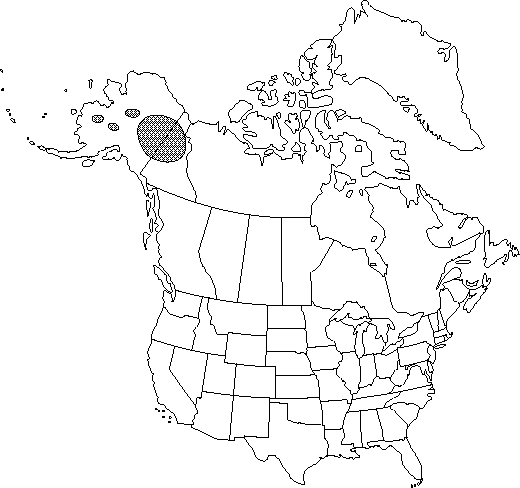Papaver nudicaule subsp. americanum
Novon 5: 294. 1995.
Plants loosely cespitose, to 2(-4) dm. Leaves to 20 cm; petiole to 2/3 length of leaf; blade gray-green abaxially, green adaxially, lanceolate, deeply 1-2×-lobed with 3-4 pairs of primary lateral lobes, glabrate or setose adaxially with long white trichomes; primary lobes lanceolate or strap-shaped. Inflorescences: scapes erect, hispid. Flowers to 6 cm diam.; petals yellow or white; anthers yellow; stigmas 5-6, disc flat to convex-umbonate. Capsules subglobose to ellipsoid, conspicuously ribbed, to 2.5 times longer than broad, to 1.5 cm, strigose with light (ivory) trichomes having abruptly expanded bases. 2n = 28.
Phenology: Flowering Jun–Aug.
Habitat: Dry, exposed, rocky openings such as on steep slopes, screes, and outcrops
Elevation: 300-1000 m
Discussion
Papaver nudicaule grows in the boreal forest of the continental interior and disjunct westward along the Yukon and Kuskokwim rivers. It includes numerous red, white, and yellow cultivars of the so-called Iceland poppy encountered along the road system in Alaska, Canada, southwestern Greenland, and no doubt elsewhere. The species was originally described from Siberian material, to which our subsp. americanum has obvious affinities (U. Rändel 1977).
Selected References
None.
